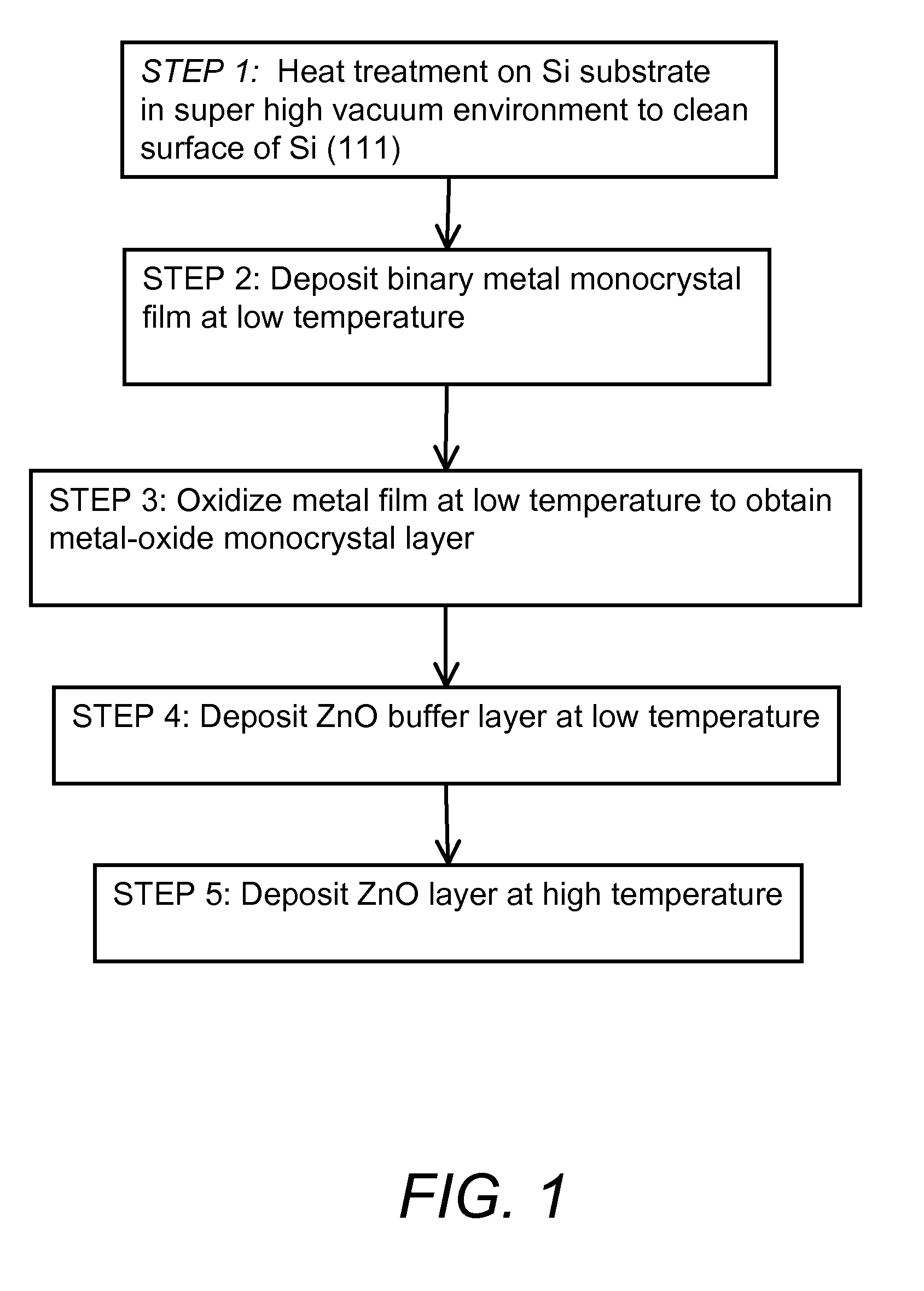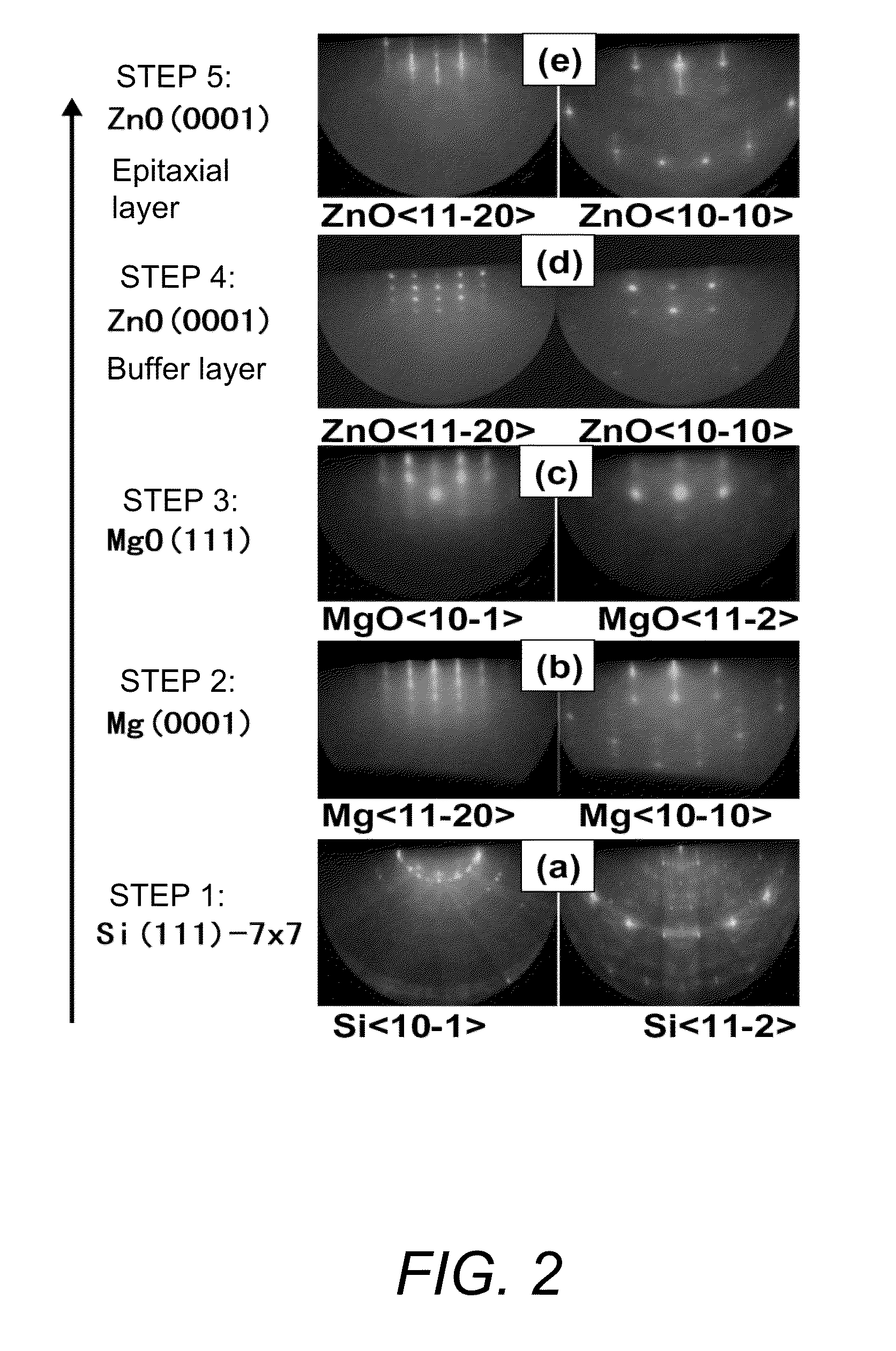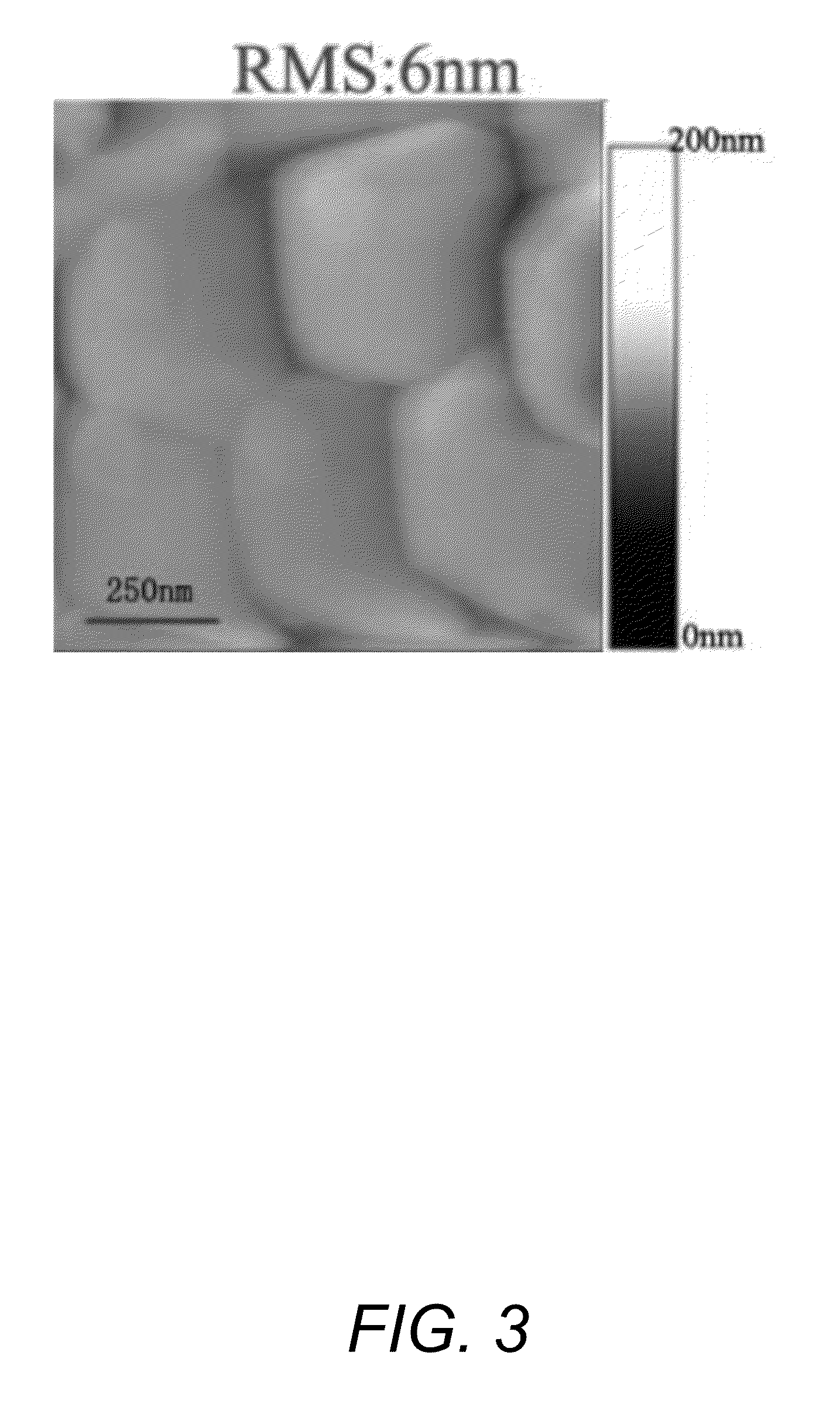Method of Manufacturing High Quality ZnO Monocrystal Film on Silicon(111) Substrate
a monocrystal film, widebandgap technology, applied in the direction of single crystal growth, polycrystalline material growth, chemistry apparatus and processes, etc., can solve the problems of inability to apply the homoepitaxial growth technology of zno monocrystal film to the industry, and it is more difficult to prepare a p-n junction zno-based device, etc., to achieve excellent photoelectronic performance
- Summary
- Abstract
- Description
- Claims
- Application Information
AI Technical Summary
Benefits of technology
Problems solved by technology
Method used
Image
Examples
embodiment 1
Preparation of the High-Quality ZnO Thin Film by Predepositing the Metal Mg Monocrystal Thin Layer on Si (111)
[0029]In the process flow chart of the invention as shown in FIG. 1, the high-quality ZnO thin film can be prepared by predepositing the metal Mg monocrystal thin layer on the substrate of Si (111), with the specific steps as follows:[0030]1. Remove the silicon oxide layer on the surface of commercially available Si (111) substrate by means of the publicly-known hydrofluoric acid corrosion method, and introduce the substrate into the MBE system;[0031]2. raise the temperature to 900° C. at atmospheric pressure below 5.0×10−7 Pa and keep for 20 minutes, so as to remove the remaining silicon oxide layer on the surface of Si by high-temperature desorption, and obtain the clean surface of Si substrate;[0032]3. cool the Si substrate to −10° C., and here its surface shows typical (7×7) reconstruction; heat an Mg diffusion furnace to make the Mg beam reach 8×10−5 Pa; and deposit the...
embodiment 2
Preparation of the High-Quality ZnO Thin Film by Predepositing the Metal Mg Monocrystal Thin Layer on Si (111)
[0036]In the process flow chart of the invention as shown in FIG. 1, the high-quality ZnO thin film can be prepared by predepositing the metal Mg monocrystal thin layer on the substrate of Si (111), with the specific steps as follows:[0037]1. Remove the silicon oxide layer on the surface of commercially available Si (111) substrate by means of the publicly-known hydrofluoric acid corrosion method, and introduce the substrate into the MBE system;[0038]2. raise the temperature to 900° C. at atmospheric pressure below 5.0×10−7 Pa and keep for 20 minutes, so as to remove the remaining silicon oxide layer on the surface of Si by high-temperature desorption, and obtain the clean surface of Si substrate;[0039]3. cool the Si substrate to 30° C., and here its surface shows typical (7×7) reconstruction; heat the Mg diffusion furnace to make the Mg beam reach 8×10−5 Pa, and deposit the...
embodiment 3
Preparation of the High-Quality ZnO Thin Film by Predepositing the Metal Mg Monocrystal Thin Layer on Si (111)
[0043]In the process flow chart of the invention as shown in FIG. 1, the high-quality ZnO thin film can be prepared by predepositing the metal Mg monocrystal thin layer on the substrate of Si (111), with the specific steps as follows:[0044]1. Remove the silicon oxide layer on the surface of commercially available Si (111) substrate by means of the publicly-known hydrofluoric acid corrosion method, and introduce the substrate into the MBE system;[0045]2. raise the temperature to 900° C. at atmospheric pressure below 5.0×10−7 Pa and keep for 20 minutes, so as to remove the remaining silicon oxide layer on the surface of Si by high-temperature desorption, and obtain the clean surface of Si substrate;[0046]3. cool the Si substrate to −30° C., and here its surface shows typical (7×7) reconstruction; heat the Mg diffusion furnace to make the Mg beam reach 8×10−5 Pa; and deposit th...
PUM
 Login to View More
Login to View More Abstract
Description
Claims
Application Information
 Login to View More
Login to View More - R&D
- Intellectual Property
- Life Sciences
- Materials
- Tech Scout
- Unparalleled Data Quality
- Higher Quality Content
- 60% Fewer Hallucinations
Browse by: Latest US Patents, China's latest patents, Technical Efficacy Thesaurus, Application Domain, Technology Topic, Popular Technical Reports.
© 2025 PatSnap. All rights reserved.Legal|Privacy policy|Modern Slavery Act Transparency Statement|Sitemap|About US| Contact US: help@patsnap.com



